In 16th century Japan, a young man has to choose between becoming a master steel maker like his father and grandfather before him, or becoming a samurai so that he can help protect his village from attacks by the various clans which want the high-quality steel made there.
Related Movies

Goryokaku (1988)
After the fall of the Tokugawa Shogunate, there was a series of battles fought while the former supporters of the Tokugawa shogunate retreated to the north where they actually started a sovereign nation that was recognized by more than one European country. Survivors of the Shinsengumi were among the followers of Enomoto Takeaki who took them to the northernmost island of Ezo where they fought their final battle at the star shaped fort, Goryokaku. The Japanese Civil Wars fought in the name of the emperor signaled the complete end of the feudal system and Japan’s entry into the modern world as those brave samurai tried to halt progress and learned that the age of modern warfare and weaponry had passed them by. Swords were no match for rifles and cannons, nor was any man a match for the power of the imperial flag. Japanese loyalty to the emperor has long defined the nation and culture despite the changing times.

The Betrayal (1966)
A naively honorable samurai comes to the bitter realization that his devotion to moral samurai principles makes him an oddity among his peers, and a very vulnerable oddity in consequence. He takes the blame for the misdeeds of others, with the understanding that he will be exiled for one year and restored to the clan's good graces after the political situation dies down. As betrayal begins to heap upon betrayal, he realizes he'll have to live out his life as a master-less ronin, if not hunted down and killed.

Samurai Justice: The Female Bodyguard (2006)
A chance encounter on the road leads to the unusual need for a female bodyguard to protect the granddaughter of an old friend of Akiyama Kohei, a wealthy merchant who plans to bypass his son-in-law as head of the company. When Daijiro’s wife Mifuyu takes on the job strange things start to happen, including the brutal slaughter of company employees. With the backing of Lord Tanuma, a chief elder on the ruling council, Kohei, Daijiro, and Mifuyu form a plan to foil the kidnappers plot and save the girl from certain death.

Samurai Justice: A Duel at Takadanobara (2005)
Edo is rocked by the news that a duel to the death is to be held at Takadanobaba, the famed site of a bloody revenge fought by Nakayama Yasubei, who late married into the Ako clan where he was one of the 47 ronin who took vengeance against the vile Lord Kira. This hallowed spot is to host a match between two of the finest swordsmen in Edo. Each is backed by a high ranking direct vassal of the shogun, who had bet their family heirlooms on the outcome. The loser was to commit seppuku and have his clan disbanded. Meanwhile a band of brigands are placing their bets on the fencer who had earlier killed their leader. Can retired master swordsman Akiyama Kohei keep this from becoming a major disaster?

The Lower Depths (1957)
Residents of a rundown boardinghouse in 19th-century Japan, including a mysterious old man and an aging actor, get drawn into a love triangle that turns violent. When amoral thief Sutekichi breaks off his affair with landlady Osugi to romance her younger sister, Okayo, Osugi extracts her revenge by revealing her infidelity to her jealous husband.
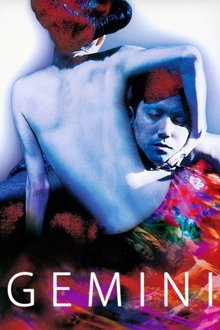
Gemini (1999)
When his mother's untimely death quickly follows his father's, a doctor begins to believe a killer may be targeting him and his amnesiac wife.

Ronin on a Mission (1987)
Mori Kojiro, a member of the Akō Ronin, fails to identify Kira Kozukenosuke before their attack and is publicly banished by Ōishi Kuranosuke. Ōishi later apologizes privately, revealing that Kira has a decoy and assigning Mori a secret mission to kill the real Kira if necessary. Devastated, Mori finds solace with Okame, a local bar owner. After the ronin avenge their master, Mori, believing their mission complete, plans to leave his samurai life for Okame. However, Terazaka Kichiemon reveals that Kira was not killed but fled, and the decapitated man was a decoy. Mori decides to complete his mission and hunt down the real Kira.
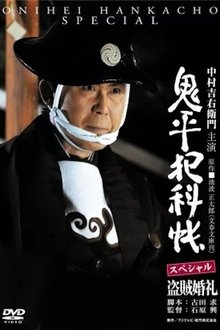
Onihei Crime Files: A Bandit Wedding (2011)
Thieves broke into Yamashiroya, a drug wholesaler, and stole 780 ryo. In the storehouse, there was a sticker with a picture of an umbrella, the signature of Yahei Kasayama, a great thief who once ransacked the entire Kanto region. Heizo Hasegawa (Kichiemon Nakamura), the director of the reform of the thieves, learns that the theft was the work of Yahei's son Yataro (Somegoro Ichikawa [now Koshiro Matsumoto]) and his gang, thanks to the help of a spy named Isaji (Koichi Miura). He learns that Yataro is in the process of marrying Oito (Tomoka Kurokawa), the daughter of Shigezo of Narumi, a great thief from Owari. Heizo learns the true identity of the thread and the evil plans of the second generation Narumi Shigezo (Fuse Hiroshi), and he meets Nagashima no Kugoro (Matsudaira Ken), a former thief who is trying to arrange a marriage deal to return the favor to the previous generation Kasayama and the previous generation Narumi. ) while hiding his identity...

Another 47 Ronins: Genroku Taiheiki (1995)
In the 14th year of the Genroku period, Asano, the head carpenter of Edo Castle, attacked Kira, the master of ceremonies, with a sword, leading to Asano's forced suicide and Kira's punishment being overlooked. Over a year later in Edo city, Shimohashi Hyogo, a carefree ronin and the nephew of Yagyu Yoshitaka, is ordered by his uncle to investigate the activities of the Ako Ronin, a group sympathetic to Asano's cause. However, Hyogo, who sympathizes with the Ronin's plight, helps out in times of need, rescuing Oishi Kuranosuke and Horibe Yahei from danger. He also teams up with Yaenosuke, a newspaper publisher, and Otaki, a geisha, to plan an attack on Kira's estate.
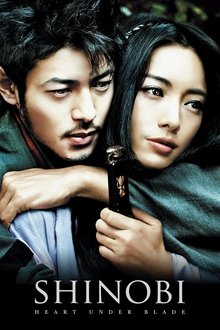
Shinobi: Heart Under Blade (2005)
Even though Gennosuke and Oboro are from rival ninja villages, they are secretly in love. At an annual conference with the Lord, it is dictated that a competition--a fight to the death--will take place between the five best shinobi from each village. Gennosuke and Oboro's love is made even more impossible when they each got picked as the leader of the five to represent their respective villages.
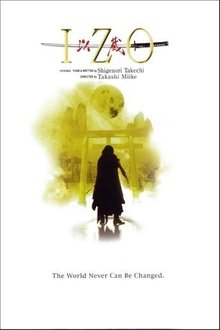
Izo (2004)
Izo is an assassin in the service of a Tosa lord and Imperial supporter. After killing dozens of the Shogun's men, Izo is captured and crucified. Instead of being extinguished, his rage propels him through the space-time continuum to present-day Tokyo. Here Izo transforms himself into a new, improved killing machine.

GOZEN: The Sword of Pure Romance (2019)
GOZEN is a jidageki (period piece) dramas. The word “gozen” refers to a feudal game held in the presence of a Daimyo, described as a match “one must not lose”.

New Tengu from Mount Kurama (1965)
The film is set in Kyoto at the end of the Tokugawa period, when there is a fierce clash between the supporters of the Emperor, who are fighting for the overthrow of the Shogunate, and the Shinsengumi squad, who are chasing them. Suddenly, a mysterious masked warrior appears, on a white horse he is called Tengu from Mount Kurama and he opposes the Shinsengumi.
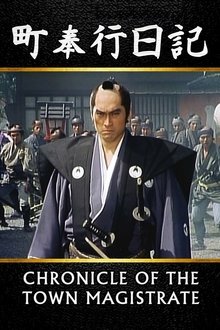
Chronicle of the Town Magistrate (1992)
In a maelstrom of evil, can a new magistrate, samurai Mochizuki Koheita, with a reputation like an alley cat, bring order to the town of Horisoto, or is he, too a corrupt villain looking to gain wealth from the oppressed people? From the pen of famed samurai author Yamamoto Shugoro, this exciting tale turns the tables on the standard samurai story with a unique lead character previously portrayed in Ichikawa Kon’s “Dora Heita.”
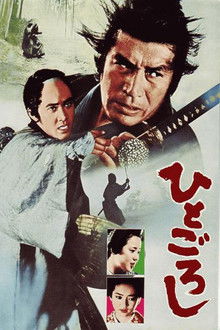
Murderer! (1976)
A cowardly samurai is sent as an official executioner targeting the clan's former sword instructor, a man whose sword and spear skills are second to none.
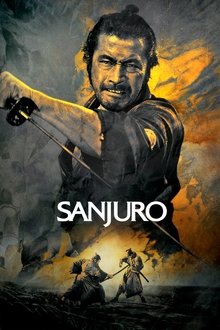
Sanjuro (1962)
Toshiro Mifune swaggers and snarls to brilliant comic effect in Kurosawa's tightly paced, beautifully composed "Sanjuro." In this companion piece and sequel to "Yojimbo," jaded samurai Sanjuro helps an idealistic group of young warriors weed out their clan's evil influences, and in the process turns their image of a proper samurai on its ear.
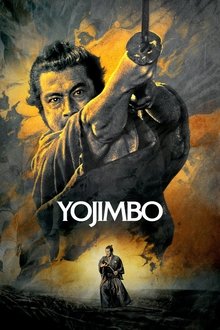
Yojimbo (1961)
A nameless ronin, or samurai with no master, enters a small village in feudal Japan where two rival businessmen are struggling for control of the local gambling trade. Taking the name Sanjuro Kuwabatake, the ronin convinces both silk merchant Tazaemon and sake merchant Tokuemon to hire him as a personal bodyguard, then artfully sets in motion a full-scale gang war between the two ambitious and unscrupulous men.
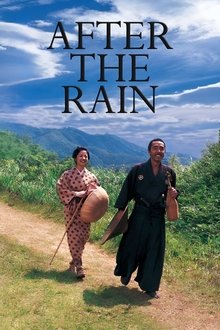
After the Rain (2000)
A group of travelers is stranded in a small country inn when the river floods during heavy rains. As the bad weather continues, tensions rise amongst the trapped travelers.
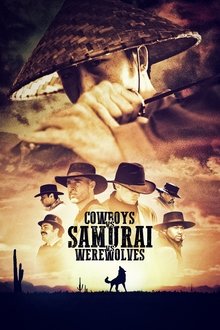
Cowboys vs Samurai vs Werewolves (2015)
Karukan, a ronin samurai, travels to the old west after his clan fails to stop a beast that has escaped Japan. He hires Langdon, to accompany him to stop the beast from killing.

Lupin the Third: The Castle of Cagliostro (1979)
After a successful robbery leaves famed thief Lupin the Third and his partner Jigen with nothing but a large amount of expertly crafted counterfeit bills, he decides to track down the forgers responsible—and steal any other treasures he may find in the Castle of Cagliostro, including the 'damsel in distress' he finds imprisoned there.